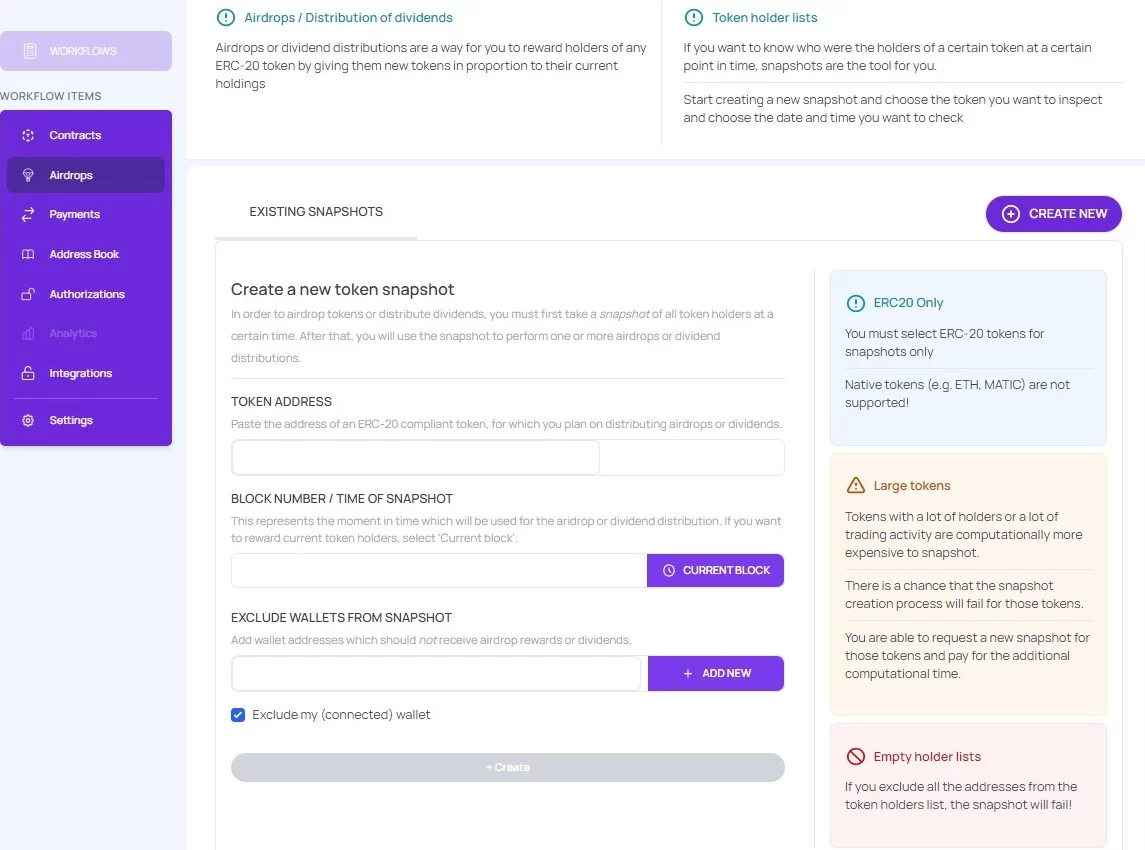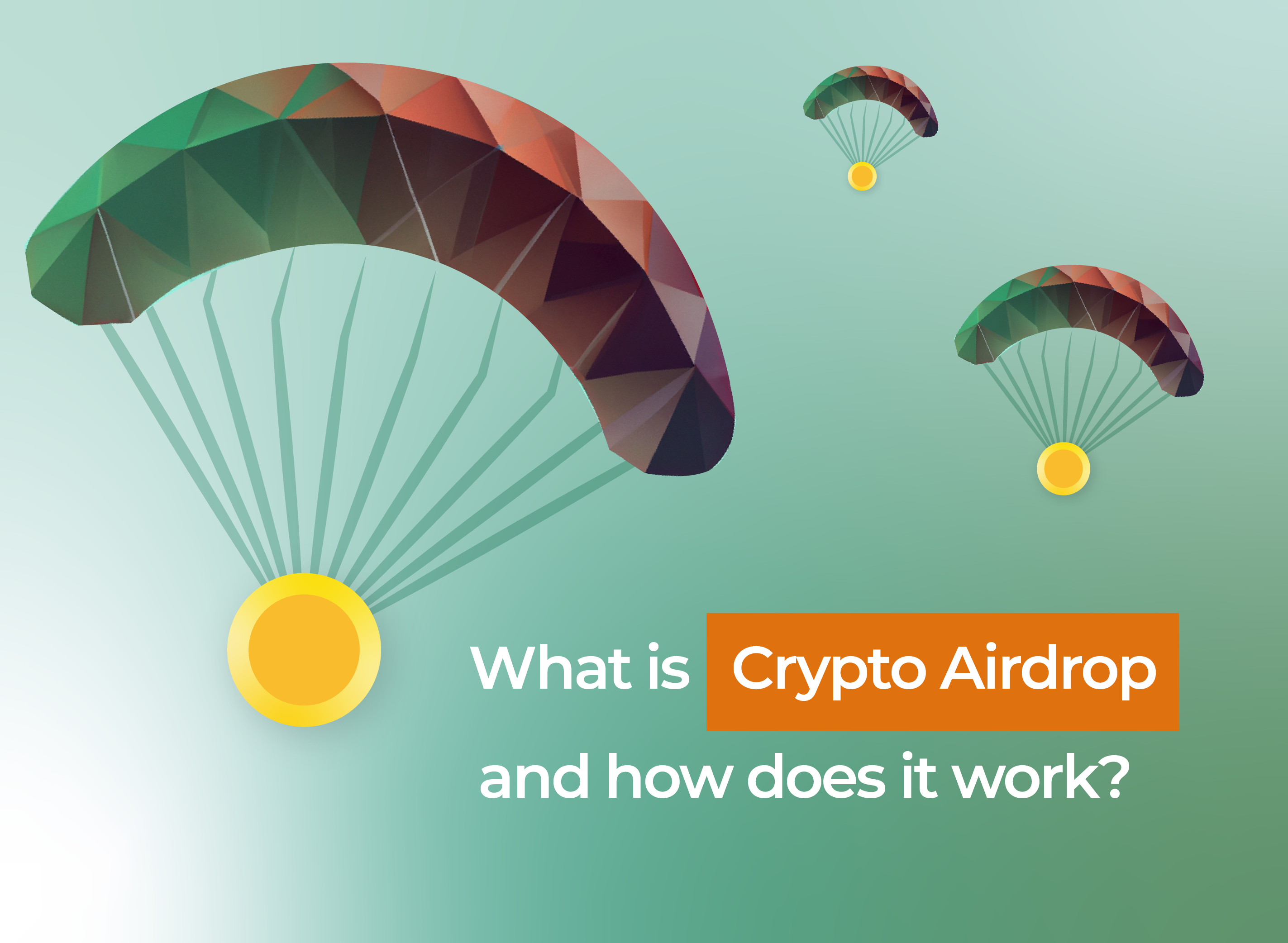Money dropping from the sky? Common sense tells us that there is no such thing as free money. However, some people wake up overnight with thousands of dollars in their account just because they used a certain crypto platform or held some cryptocurrency.
Believe it or not, airdrop, the practice of sending coins or tokens to the account of random (!) crypto wallets, isn’t new at all. It dates back to 2016.
Today, it’s part of the promotional strategy of many crypto projects. Whether a marketing trick or a loyalty reward, crypto airdrops have become influential in all aspects of the business.
What Is a Crypto Airdrop?
Crypto airdrop is a way of acquiring cryptocurrencies without actually buying them. It’s the transfer of newly created crypto project tokens to users’ wallets.
In several situations, a project usually chooses to launch an airdrop, but the effect is always the same. The user of the application/protocol receives a certain amount of tokens, usually for performing a simple task.
Crypto airdrops can be observed as rewards for signing up for the newsletter, following the social media pages of the project, or another way to draw attention to the brand and attract more people to the platform. But most often, people are rewarded for just using the platform.
Types of Crypto Airdrops
We will divide crypto airdrops into five main groups.
Standard Airdrop
This type of airdrop involves people simply expressing their desire to receive an airdrop. They only need to provide their wallet address and no extra information.
Standard airdrops frequently feature a predetermined number of tokens to distribute and a certain number of tokens that someone can receive. This type of airdrop is popular because it’s simple, and there is no limitation, i.e., everyone can create as many wallets as they want in order to empty the airdrop as quickly as possible.
Bounty Airdrop
This is a type of airdrop that involves rewarding people who participate in a certain type of task – posting on social media and tagging a company, sharing a post, or retweeting a tweet about a project.
Holder Airdrop
Holder airdrop implies the distribution of tokens to those who already own that token. All blockchain users have complete transparency into wallets, and token distribution since wallets and blockchain information are parts of a publicly distributed ledger.
Exclusive Airdrop
Exclusive crypto airdrops, a more specialized kind of holder airdrop, occur when particular people are hand-picked for the airdrop.
The difference between exclusive and holder airdrop is that holders may be chosen based on factors other than the number of tokens they possess – number of forum posts, time invested in a project, or the amount of money spent on non-token activities.
Raffle Airdrop
A raffle airdrop may be paired with some of the airdrops mentioned above. A project will frequently announce the number of airdrops they plan to offer while enticing users to win a raffle airdrop. You can get this token by earning points, holding tokens, or expressing interest.
Sometimes the number of interested parties is bigger than the number of airdrops. So, in that case, a raffle occurs, and airdrops are assigned by random selection.
Pros and Cons of Crypto Airdrops
For a better understanding of airdrops, we must take a look at their advantages and disadvantages.
We will start with the advantages:
- Increases public awareness of a project due to the airdrop’s marketing potential
- Promotes the acceptance and use of a recently released token
- Tokens may be distributed among holders in a way that wouldn’t have happened spontaneously in a free market
- Reward those who early adopt the project or participate and have a stake in it
Let’s name all disadvantages:
- Security risks if wallet owners connect wallets to shady websites to request an airdrop
- Possibly ‘pump-and-dump’ schemes
- Some investors could decide not to participate if they favor other token distribution methods.
- Airdrop can prove to be worthless if it turns out that the token doesn’t have liquidity on an exchange.
Why Crypto Projects Choose Airdrop?
Various reasons encourage owners of crypto projects to start with airdrop.
Creating awareness
If you wondered why crypto startups go for airdrops, the reason lies in spreading awareness. ICOs dominated the early stage of crowdfunding. But issues quickly surfaced. Many startups appeared during the gold rush of 2017, often with fragile and partly plagiarized white papers, causing saturation and numerous scams.
Anyway, the answer to this problem was simple – sharing free tokens. The airdrops’ popularity has led many projects to start aggressive promotion. Luckily, it became easy to recognize the so-called ‘pump-and-dump’ scheme.
Rewarding users
The unfortunate truth is that many crypto investors are solely interested in getting the topmost return on their investment (ROI) and don’t care about the long-term project’s viability. They jump from one project to another, selling their tokens, and generating enormous gains at the expense of small investors without adding any real value to the protocol.
On the other hand, some projects conduct token airdrops to reward loyal users who use their platforms.
Decentralization of token distribution
Wealthy investors can leverage their wealth and secure purchases at low prices during initial capital-raising rounds, letting them amass a substantial amount of circulating supply. The issue is that centralization, which is now one of the major downsides, is created when a vast number of tokens are in the hands of a few people.
In this case, projects may choose to conduct an airdrop to balance the token distribution.
Attracting investment
When the project launches and releases an airdrop, if it’s successful, it will increase the token’s price because those who receive tokens will act in their favor and do their best to promote the project. Especially in today’s online economy, each interaction indicator can be measured and used to draw in investors. Whether it’s advertising and brand mentioning on social networks, collecting followers, or building a community on Twitter, airdrop can help boost the project’s total capital.
How do Crypto Airdrops work?
Although airdrops are often tied to cryptocurrencies, some projects give away NFTs instead of crypto.
When talking about crypto airdrops, projects will distribute cryptocurrencies without asking for anything. In contrast, others will ask you to complete certain tasks – following a social media account, subscribing to a newsletter, or keeping a minimum amount of coins in your wallet. However, you aren’t always guaranteed to receive dropped tokens.
Sometimes, airdrops are given only to wallets interacting with the platform’s project before an exact date.
If you decide to go for an airdrop, you can do it on the Dev3 platform in a breeze.
Create a Snapshot
To perform an airdrop, you need to know who your token holders are, i.e., who owns the specific tokens you want to reward them with.
The first step is to take a snapshot of those who own your tokens. When you create a database of all token holders, you can start an airdrop at some point.
How can we create a snapshot?
- Choose an ‘Airdrops’ option from the workflow
- Go to ‘Create New’

- Pick a token address from a crypto wallet
- Attach the address of the token for which we plan to make an airdrop/dividend distribution (once you copy an address, it will instantly recognize which token it is)
- Pick the time and date when you want to release an airdrop (‘Block Number / Time of Snapshot’)
- Exclude your wallet (because you don’t want to reward yourself for loyalty)
- Press ‘Create’

Create an Airdrop
When you go back to the ‘Airdrops,’ you will see a created snapshot. To make an airdrop, you need to enter the snapshot and choose the token you want to award your token holders. You can reward them with the same token or choose the one you like.
Enter the number of tokens you want to airdrop and confirm (‘Approve’).
Once you click ‘Approve,’ your crypto wallet will open and require you to sign the transaction. When you confirm the transaction, the transaction will be executed. The airdrop will begin. The last step is to sign the transaction in order to finalize it.
That’s it! As you can see, there are only two steps – creating a snapshot and creating an airdrop.
Once you create an airdrop, the users from the other side will receive the notification that they’ve received tokens. They can choose to send those tokens to their blockchain wallet or to reinvest the same tokens within the group if there is a project. If a project doesn’t exist, they can decide to leave. In other words, they can do whatever they want with those tokens.
Conclusion
Finally, it should be noted that airdrops are directly related to the concept of ownership. Imagine being rewarded with shares in Uber for being one of the first to try out a transportation service, or in the case of Airbnb, for trying a new accommodation concept.
The idea seems unattainable in the traditional financial world, but in the crypto space, it really makes sense. People will get more connected to your project and appreciate your care for them. Dev3 platform is here to help you make a community by rewarding your most valued users and spreading the good word about you. So, step out and try building an airdrop all by yourself.

